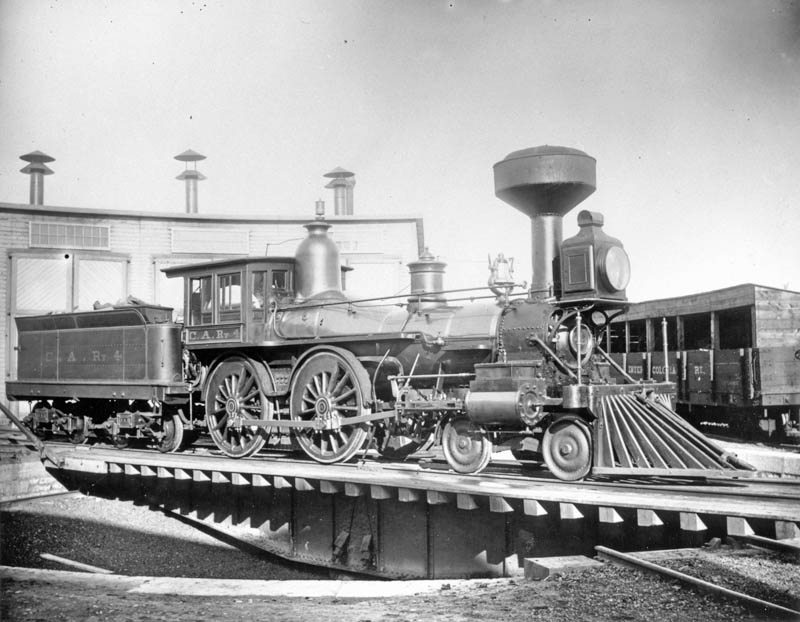The Engineer Also Acted as Fireman Canada Atlantic wood burning passenger locomotive 4-4-0 No. 4 "Casselman" on the turntable at the roundhouse on Elgin Street, Ottawa. PA205956. A book with the story of the beginnings and early experiences of all well known locomotive engineers would make great reading. Every engineer, either in his firing days or in the first days of driving, has had some peculiar experience. Take for example the early engineering experience of Harry (Hiram) Brown of Ottawa, now retired. When Harry Brown started driving an engine he did so under quite humble circumstances. His engineering start was on a small tank engine which ran from Deseronto to the G.T.R. station (junction) about a mile and a half back of Deseronto. At that time the Rathbun Lumber Co. owned pretty much everything at Deseronto. The company owned the little railway line. The train crew on the Rathbun train consisted of an engineer and a conductor. The engineer ran the train and fired as well, and the conductor collected fares, and also braked the train. Hand brakes were use. This "short-line" train made six trips per day between Deseronto and the G.T.R. station Were Pooh-Bahs In
the eighties the Rathbun firm had great holdings. It also owned a three
and a half mile railway line out from Gananoque to the Grand Trunk
Railway junction, and a 20 miles line between Napanee and Tamworth.After serving several years and gaining experience on these miniature railways, young Brown began to aspire for higher railway activities, In 1886 he came to Ottawa, attracted by the possibilities of the then almost new Canada Atlantic Railway. To Ottawa There
was no engine opening when he came here, so he accepted a job as
cleaner in the C.P.R. shops. Two days later they (presumaby the
CAR) called the newcomer out of the cleaning job and put him on a
freight engine as fireman.The crews of the freight engines at that time (1886) were: Engineers - James Casey, H. Kirk, Billy Sandow and Billy Eldridge. Firemen - James O'Connor, Billy Gall, Alex Dewar and Harry Brown. All engines at that time were wood burners. The freight engines carried a wood car behind the tender, to ensure a supply. The passenger engines did not carry a wood car. Instead, each tender had built up racks to increase the carrying capacity. The passenger engines did not require as much wood as the freight engines, because the early passenger trains on the C.A.R. only carried two coaches. The load was therefore light. Billy Gall referred to as one of the early firemen was the first man to fire a coal-burning freight engine out of Ottawa on the C.A.R. Mr.Gall is still alive. He is an uncle of Len Grosvenor, the hockey player. When the C.A.R. started in 1882, the passenger service was supplied by the Grand Trunk Railway. In 1887 the C.A.R. began to handle its own passenger service, and put on fast trains to Montreal over the G.T.R. The engineers of these fast trains were: F. Ferguson, Isaac Johnson, Robert Orr and Phil Roy. All are alive but superannuated. The conductors on these fast trains were: John Roberts, Ned Martin, Dan Brown, and J. Whitman. The last three named are dead. John Roberts is superannuated. Bytown Railway Society, Branchline, September 2010. |